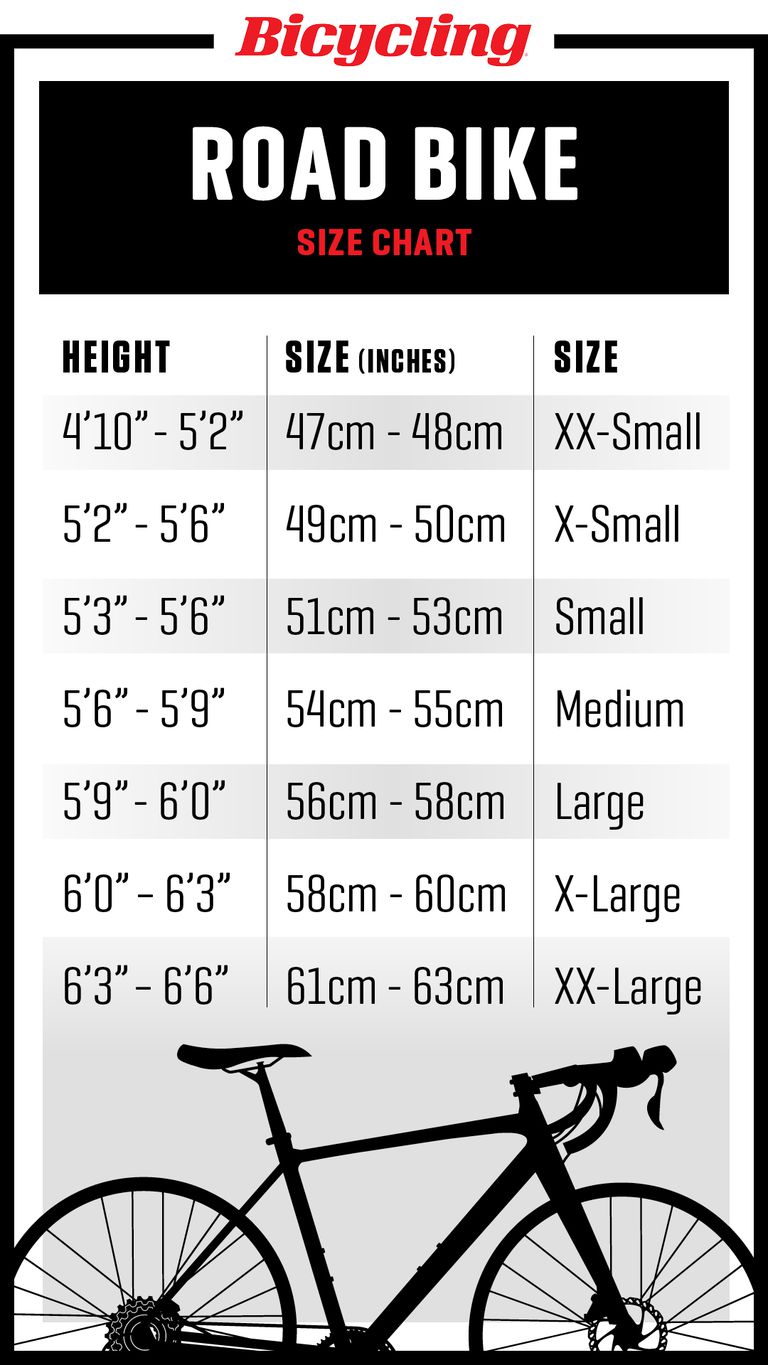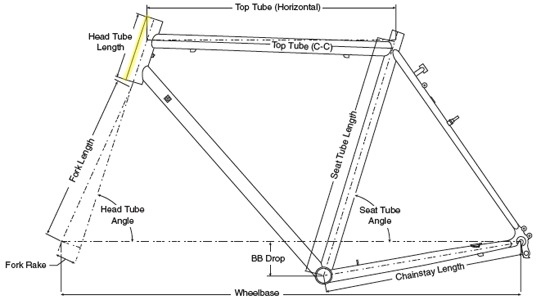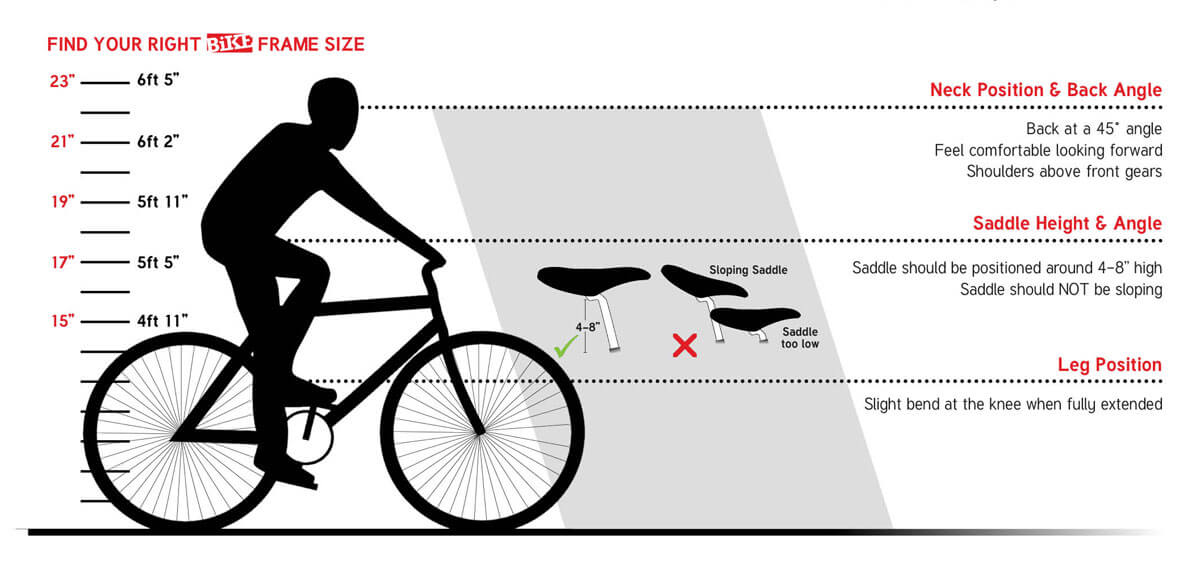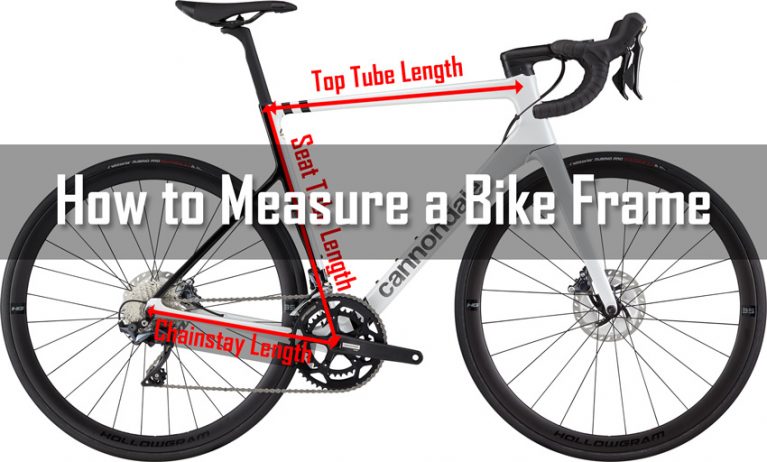Why Proper Frame Size Matters for a Comfortable Ride
Having a properly fitting bicycle frame size is crucial for a comfortable and enjoyable ride. A frame that is too small or too large can lead to discomfort, fatigue, and even injury. When a rider is on a bike with a frame that is the right size, they are able to maintain a comfortable riding position, with their weight evenly distributed over the saddle, handlebars, and pedals. This, in turn, allows for efficient energy transfer, reduced strain on the muscles, and improved overall performance.
A well-fitting frame size also plays a significant role in reducing the risk of injury. When a rider is on a bike that is too small, they may be more likely to experience back, neck, and shoulder pain due to the strain of reaching for the handlebars or leaning forward to compensate for the lack of leg room. On the other hand, a frame that is too large can cause the rider to overstretch, leading to discomfort and fatigue in the arms, legs, and back.
In addition to comfort and safety, a properly fitting frame size can also enhance the overall riding experience. When a rider is able to maintain a comfortable position on the bike, they are able to focus on the road ahead, enjoy the scenery, and fully engage with the riding experience. This, in turn, can lead to increased confidence, improved skills, and a greater sense of enjoyment and satisfaction.
So, how do you ensure that you have a properly fitting frame size? The first step is to understand the different types of frames and how they vary in size and geometry. This will be discussed in more detail in the following section. However, it’s worth noting that finding the right frame size is not just about matching your height or inseam to a specific size chart. Rather, it’s about finding a bike that fits your unique body shape, riding style, and personal preferences.
By taking the time to find a properly fitting frame size, riders can experience a more comfortable, enjoyable, and safe ride. Whether you’re a seasoned cyclist or just starting out, understanding the importance of frame size and how to measure it is crucial for getting the most out of your riding experience.
Understanding Bicycle Frame Sizes: A Brief Overview
Bicycle frame sizes can be confusing, especially for those new to cycling. However, understanding the basics of frame sizes is crucial for finding the perfect fit. There are several types of bicycle frames, each designed for specific riding styles and terrain. The most common types of frames include road, mountain, hybrid, and cyclocross.
Road bike frames are designed for speed and efficiency on paved roads. They typically have a more aggressive geometry, with a lower standover height and a longer top tube. Mountain bike frames, on the other hand, are designed for off-road riding and feature a more upright geometry, with a higher standover height and a shorter top tube. Hybrid frames combine elements of both road and mountain bikes, making them suitable for commuting and recreational riding.
In addition to the type of frame, bicycle frame sizes also vary in terms of geometry. The most common measurements used to determine frame size include standover height, top tube length, seat tube length, and wheelbase. Standover height refers to the distance between the ground and the top of the frame, while top tube length refers to the distance between the head tube and the seat tube. Seat tube length, on the other hand, refers to the distance between the bottom bracket and the top of the seat tube.
Understanding these measurements is crucial for determining the correct frame size. For example, a rider with a longer inseam may require a frame with a longer seat tube length, while a rider with a shorter torso may require a frame with a shorter top tube length. By considering these factors, riders can find a frame that fits their unique body shape and riding style.
When it comes to measuring frame size, there are several methods to use. One common method is to use a frame size chart, which provides a general guideline for determining frame size based on height and inseam. However, this method is not always accurate, as it does not take into account individual variations in body shape and riding style. A more accurate method is to use a combination of measurements, including standover height, top tube length, and seat tube length.
By understanding the basics of bicycle frame sizes and how to measure them, riders can find a frame that fits their unique needs and preferences. This, in turn, can lead to a more comfortable and enjoyable ride. In the next section, we will provide a step-by-step guide on how to measure your bicycle frame size.
How to Measure Your Bicycle Frame Size: A Step-by-Step Guide
Measuring your bicycle frame size is a crucial step in finding the perfect fit. To ensure accuracy, it’s essential to take the right measurements and use the correct tools. Here’s a step-by-step guide on how to measure your bicycle frame size:
**Tools needed:**
- Tape measure or a flexible measuring tape
- Ruler or a straightedge
- Pencil or pen
- Calculator (optional)
**Step 1: Measure the Standover Height**
Standover height is the distance between the ground and the top of the frame. To measure the standover height, place the bike on a level surface and stand over the frame with your feet shoulder-width apart. Measure the distance from the ground to the top of the frame, just above the top tube. Record this measurement in inches or centimeters.
**Step 2: Measure the Top Tube Length**
Top tube length is the distance between the head tube and the seat tube. To measure the top tube length, place the bike on a level surface and measure the distance between the center of the head tube and the center of the seat tube. Record this measurement in inches or centimeters.
**Step 3: Measure the Seat Tube Length**
Seat tube length is the distance between the bottom bracket and the top of the seat tube. To measure the seat tube length, place the bike on a level surface and measure the distance between the center of the bottom bracket and the top of the seat tube. Record this measurement in inches or centimeters.
**Step 4: Measure the Wheelbase**
Wheelbase is the distance between the center of the front wheel and the center of the rear wheel. To measure the wheelbase, place the bike on a level surface and measure the distance between the center of the front wheel and the center of the rear wheel. Record this measurement in inches or centimeters.
**Step 5: Calculate the Frame Size**
Using the measurements taken in steps 1-4, calculate the frame size using a frame size chart or a online calculator. Make sure to consider your riding style and personal preference when choosing a frame size.
By following these steps, you can accurately measure your bicycle frame size and find the perfect fit for a comfortable and enjoyable ride.
Using Online Frame Size Charts: A Helpful Tool for Finding Your Size
When it comes to determining the ideal frame size for a bicycle, online frame size charts can be a valuable resource. These charts provide a quick and easy way to estimate the correct frame size based on a rider’s height, inseam, and riding style. By using an online frame size chart, cyclists can narrow down their options and find a frame size that is likely to provide a comfortable and efficient ride.
To use an online frame size chart, riders will typically need to provide their height and inseam measurements. Some charts may also ask for additional information, such as the type of bike being ridden (e.g., road, mountain, hybrid) and the rider’s preferred riding position (e.g., upright, aggressive). By inputting this information, the chart can provide a recommended frame size range, which can be used to guide the bike-buying process.
One of the benefits of using an online frame size chart is that it can help riders avoid the common mistake of choosing a frame size that is too small or too large. A frame size that is too small can lead to discomfort and reduced efficiency, while a frame size that is too large can make the bike difficult to handle. By using a chart to estimate the correct frame size, riders can increase their chances of finding a bike that fits well and rides smoothly.
It’s worth noting that online frame size charts are not always 100% accurate, and may not take into account individual variations in body shape and riding style. Therefore, it’s still important to test ride a bike and consult with a professional bike fitter if possible. However, for riders who are looking for a general guideline or want to get a sense of their ideal frame size before visiting a bike shop, online frame size charts can be a helpful tool.
In addition to using online frame size charts, riders can also learn how to measure frame size on a bicycle to get a more accurate fit. By combining these two methods, cyclists can increase their chances of finding a bike that fits perfectly and provides a comfortable and enjoyable ride.
Factors to Consider When Choosing a Frame Size: Riding Style and Personal Preference
When choosing a bicycle frame size, it’s essential to consider not only the rider’s physical measurements but also their riding style and personal preferences. A frame size that is ideal for one rider may not be suitable for another, even if they share similar physical characteristics. By taking into account factors such as comfort, handling, and performance, riders can find a frame size that meets their specific needs and enhances their overall riding experience.
Riding style is a critical factor to consider when choosing a frame size. For example, riders who prefer an aggressive, aerodynamic position may require a smaller frame size to achieve the desired riding position. On the other hand, riders who prioritize comfort and upright riding may prefer a larger frame size to provide more room for movement and flexibility. By considering their riding style, riders can select a frame size that supports their preferred position and riding technique.
Personal preference also plays a significant role in choosing a frame size. Some riders may prioritize a more compact, responsive frame size for improved handling and maneuverability. Others may prefer a longer, more stable frame size for increased comfort and stability. By considering their personal preferences, riders can find a frame size that meets their unique needs and riding style.
In addition to riding style and personal preference, other factors to consider when choosing a frame size include the type of bike being ridden, the terrain, and the rider’s fitness level. For example, riders who plan to ride on rough terrain or engage in high-intensity activities may require a more robust, durable frame size. By taking these factors into account, riders can select a frame size that is tailored to their specific needs and riding conditions.
Ultimately, finding the right frame size requires a combination of objective measurements and subjective considerations. By taking into account both physical measurements and personal preferences, riders can find a frame size that provides a comfortable, efficient, and enjoyable ride. Whether you’re a seasoned cyclist or just starting out, choosing the right frame size is essential for getting the most out of your bike and enjoying the many benefits of cycling.
Common Mistakes to Avoid When Measuring Your Frame Size
Measuring a bicycle frame size can be a straightforward process, but there are several common mistakes to avoid in order to ensure an accurate fit. By being aware of these potential pitfalls, riders can take the necessary steps to ensure a comfortable and efficient ride.
One of the most common mistakes is taking incorrect measurements. This can occur when using the wrong tools or techniques, or when failing to account for the specific geometry of the bike. For example, using a flexible tape measure or failing to level the bike can result in inaccurate measurements. To avoid this mistake, it’s essential to use a rigid tape measure and to ensure the bike is properly leveled and secured.
Another mistake is neglecting to consider riding style when measuring frame size. Different riding styles require different frame sizes, and failing to account for this can result in a poor fit. For example, a rider who prefers an aggressive, aerodynamic position may require a smaller frame size than a rider who prefers a more upright position. By considering riding style, riders can ensure a frame size that meets their specific needs.
Not seeking professional advice is another common mistake. While measuring frame size can be a DIY process, there are situations where seeking professional advice is recommended. For example, riders who are new to cycling or have a unique body type may benefit from consulting with a professional bike fitter. By seeking expert advice, riders can ensure a precise fit and avoid potential discomfort or injury.
Additionally, riders should avoid relying solely on online frame size charts. While these charts can provide a general guideline, they may not take into account individual variations in body shape and riding style. By combining online charts with physical measurements and professional advice, riders can ensure a frame size that meets their specific needs.
Finally, riders should avoid making assumptions about frame size based on previous experiences. Each bike is unique, and what worked for one bike may not work for another. By taking the time to measure and evaluate each bike individually, riders can ensure a precise fit and avoid potential discomfort or injury.
By avoiding these common mistakes, riders can ensure a comfortable and efficient ride. Whether you’re a seasoned cyclist or just starting out, taking the time to measure and evaluate your frame size is essential for getting the most out of your bike.
Getting a Professional Bike Fit: When to Seek Expert Advice
While measuring frame size can be a DIY process, there are situations where seeking professional advice is recommended. A professional bike fit can provide a precise and personalized fit, taking into account individual variations in body shape, riding style, and bike geometry. By seeking expert advice, riders can ensure a comfortable and efficient ride, and avoid potential discomfort or injury.
There are several situations where a professional bike fit is recommended. For example, riders who are new to cycling may benefit from a professional fit to ensure a proper setup and avoid bad habits. Riders with unique body types, such as those with unusually long or short legs, may also require a custom fit to accommodate their specific needs. Additionally, riders who are experiencing discomfort or pain while riding may benefit from a professional fit to identify and address any issues.
A professional bike fit typically involves a thorough assessment of the rider’s body and riding style, as well as a detailed analysis of the bike’s geometry and setup. The fitter will use specialized tools and software to measure the rider’s body and bike, and provide recommendations for adjustments and modifications. This may include changes to the saddle height, handlebar position, and pedal setup, as well as recommendations for specific bike components or accessories.
The benefits of a professional bike fit are numerous. By ensuring a precise and personalized fit, riders can improve their comfort, efficiency, and overall riding experience. A professional fit can also help to prevent injuries and discomfort, by identifying and addressing any issues before they become a problem. Additionally, a professional fit can help riders to optimize their bike’s performance, by ensuring that the bike is set up to meet their specific needs and riding style.
When seeking a professional bike fit, it’s essential to find a qualified and experienced fitter. Look for a fitter who has specialized training and certification, such as a Certified Bike Fitter (CBF) or a Professional Bike Fitter (PBF). It’s also important to choose a fitter who has experience working with riders of your specific type and style, such as road, mountain, or triathlon riders.
By seeking a professional bike fit, riders can ensure a comfortable and efficient ride, and optimize their bike’s performance. Whether you’re a seasoned cyclist or just starting out, a professional fit can provide a personalized and precise setup, tailored to your specific needs and riding style.
Conclusion: Finding Your Perfect Fit for a Comfortable and Enjoyable Ride
Measuring your bicycle frame size is a crucial step in ensuring a comfortable and enjoyable ride. By following the steps outlined in this guide, you can determine your ideal frame size and find a bike that fits your body and riding style. Remember to consider factors such as comfort, handling, and performance when choosing a frame size, and don’t hesitate to seek professional advice if you’re unsure.
Whether you’re a seasoned cyclist or just starting out, finding the right frame size can make all the difference in your riding experience. A properly fitting bike can improve your comfort, reduce your risk of injury, and enhance your overall performance. By taking the time to measure your frame size and choose the right bike, you can enjoy a more comfortable and enjoyable ride.
In addition to measuring your frame size, there are several other tips to keep in mind when choosing a bike. Consider the type of riding you’ll be doing most often, and choose a bike that’s designed for that type of riding. Think about the features that are important to you, such as gears, brakes, and suspension. And don’t forget to test ride a bike before you buy it, to ensure it’s a good fit and feels comfortable to ride.
By following these tips and taking the time to measure your frame size, you can find a bike that’s perfect for you. Remember, the right bike can make all the difference in your riding experience, so don’t settle for a bike that doesn’t fit. Take the time to find a bike that’s comfortable, efficient, and fun to ride, and you’ll be enjoying the ride of your life in no time.
Finally, don’t forget to maintain your bike regularly to ensure it continues to fit and perform well. Regular tune-ups and adjustments can help keep your bike running smoothly and prevent any issues that may arise from a poor fit. By taking care of your bike and finding the right fit, you can enjoy a comfortable and enjoyable ride for years to come.








